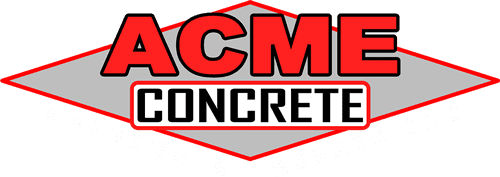Location: Batavia, IL
Client: Bellevue Place HOA
Services: Polyurethane Concrete Raising and Grinding
A Smart Solution for a Complex Challenge
At Bellevue Place HOA in Batavia, Illinois, uneven, sunken, and shifting concrete walkways had become more than an eyesore — they posed real safety risks and drainage problems. The HOA’s leadership needed a solution that balanced safety, budget, and long-term performance. Having successfully completed Phases 1 and 2 previously, Acme Concrete Raising & Repair was the trusted choice for Phase 3.
Why Polyurethane Foam Lifting Was the First Choice
Acme is an industry leader in polyurethane concrete raising, a method that injects lightweight, high-density foam beneath concrete slabs. This approach is:
Fast – often completed in hours.
Clean – minimal mess compared to mudjacking.
Effective – fills voids, restores grades, and prevents future settlement.
Durable – polyurethane does not erode or wash away.
In Bellevue’s case, many slabs had settled over an inch, creating pooling water and hazardous tripping points. Foam lifting allowed Acme to restore these surfaces, sometimes lifting them even higher than their original position to overcome tree root displacement, without the cost and disruption of replacement.
When Grinding Was the Smarter Option
While Acme’s philosophy is always pro-raising over grinding, certain site conditions called for a hybrid approach. Severe tree root interference, extreme slab displacement, or budget limitations can make lifting alone impractical. In those cases, Acme’s precision grinding shaved down high edges to create smooth, safe transitions. This method:
Prevented structural damage to slabs.
Preserved as much of the original concrete as possible.
Kept the project within the HOA’s financial plan.
Acme’s Smart Lift System™: Tailored to Every Project
The Smart Lift System™ is Acme’s proprietary, adaptive repair process. It considers:
The severity and type of displacement.
Root growth or underlying soil conditions.
Drainage patterns that could cause future problems.
The client’s budget and long-term goals.
For Bellevue Place Phase 3, this meant combining polyurethane lifting, saw cutting to free constrained slabs, and precision grinding for select areas. The result? Trip hazards eliminated, drainage improved, and the concrete’s lifespan extended.
The Results: Safety, Budget, and Longevity
Upon completion, the Bellevue Place HOA had:
Smooth, hazard-free walkways.
Better drainage in pooling areas.
A repair plan that stayed on schedule and within budget.
No need for costly full replacements.
The improvements blended seamlessly with existing surfaces, preserving the property’s curb appeal while delivering long-term safety.
Why This Matters for Other HOAs and Properties
If you manage an HOA, commercial property, or residential community, you might face similar issues:
Tree roots pushing up slabs.
Sunken walkways holding water.
Safety hazards from uneven joints.
Limited funds for large-scale replacements.
Acme’s hybrid method proves you can achieve safety, functionality, and budget goals without resorting to full concrete replacement.
Watch the Project in Action
🎥 Watch the full video: Concrete Lifting and Leveling for Bellevue Place HOA Phase 3
FAQ: Concrete Lifting & Grinding
What is the Smart Lift System™ for concrete repair?
It’s Acme’s project-specific process that uses polyurethane foam lifting as the primary method, combined with grinding or other techniques as needed. The system is designed to address both structural and safety concerns while considering drainage and budget.
When should property owners choose grinding instead of only concrete lifting?
Grinding is used only when lifting isn’t feasible due to severe root interference, extreme displacement, or budget limitations. It’s a cost-effective way to eliminate trip hazards without damaging slabs.
Is polyurethane foam lifting more affordable than full concrete replacement for HOAs?
Yes, it’s typically faster, cleaner, and more cost-effective than replacement while still providing a long-term, durable solution.
How does concrete lifting help solve drainage problems on sidewalks and walkways?
By restoring correct slopes for water runoff, lifting prevents pooling and reduces ice hazards in winter. Grinding can then fine-tune transitions to ensure consistent drainage.
How long do polyurethane concrete repairs typically last in the Midwest climate?
When site conditions are properly addressed, polyurethane lifting can be permanent. The material resists erosion, water damage, and settlement, even with freeze-thaw cycles common in Illinois.
